Switching to elementary OS - part two - applications
After installing elementary OS I wanted to spend some time getting to know some of its native applications.

In part one I discussed my initial impressions of elementary OS 5.1, which is based on Ubuntu 18.04 LTS. I've been impressed with this Linux distribution so far and I wanted to dive more into the applications available in the elementary AppCenter along with the elementary app eco system.
Pre-installed applications
On installation there were a number of applications pre-installed, which is fairly normal for a Linux distribution. What's different though is that only elementary OS curated apps (more on those later) were pre-installed, likely because of elementary's goal to be a privacy focused distribution. For comparison, elementary OS 5.1's installation DVD image file is only 1.5 GB versus Ubuntu 20.04 LTS' which is 2.7 GB. Despite there being few initial applications available, you won't find LibreOffice or Firefox for example, what you are given is some quite capable software and includes at least:
- Calculator
- Calendar
- Camera
- Code (a basic text editor for development work)
- Music (a music player and library manager)
- Terminal
- Videos (a video player)
There are some others too, but some I uninstalled early on as I knew I wouldn't be using them.
Music
I'm using the bundled Music application as I type this blog post, and it seems capable, albeit basic looking. The first time I launched it my existing music library (at ~/Music) was scanned to find my collection. Previously I'd curated my library with the Clementine Music Player, which I could reinstall, but I wanted to try out the elementary OS native offerings.
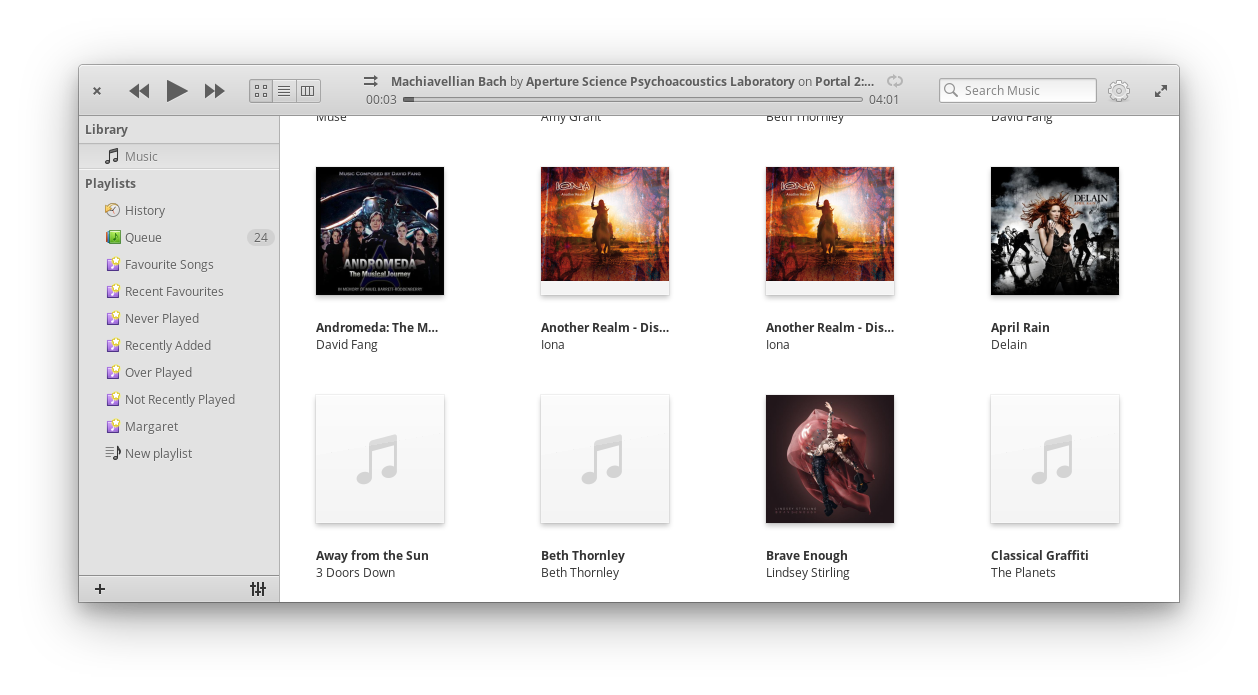
The default view seems to be "view as albums" which presents you with a grid of albums and their associated album art, if it's available. Looking at my files it seems the application will look for an image file in the same directory as the MP3 (or Ogg) files, using that as the album art if found. If there's no image it appears that Music looks to use an image embedded in the music file itself. I'm not aware of the application contacting an online database to get the album art, which would go against the privacy goal of the OS.
Although there's a search box in the top right, I tend to prefer viewing my collection in the "view in columns" layout giving me three columns (artist, album, track) and the associated information.
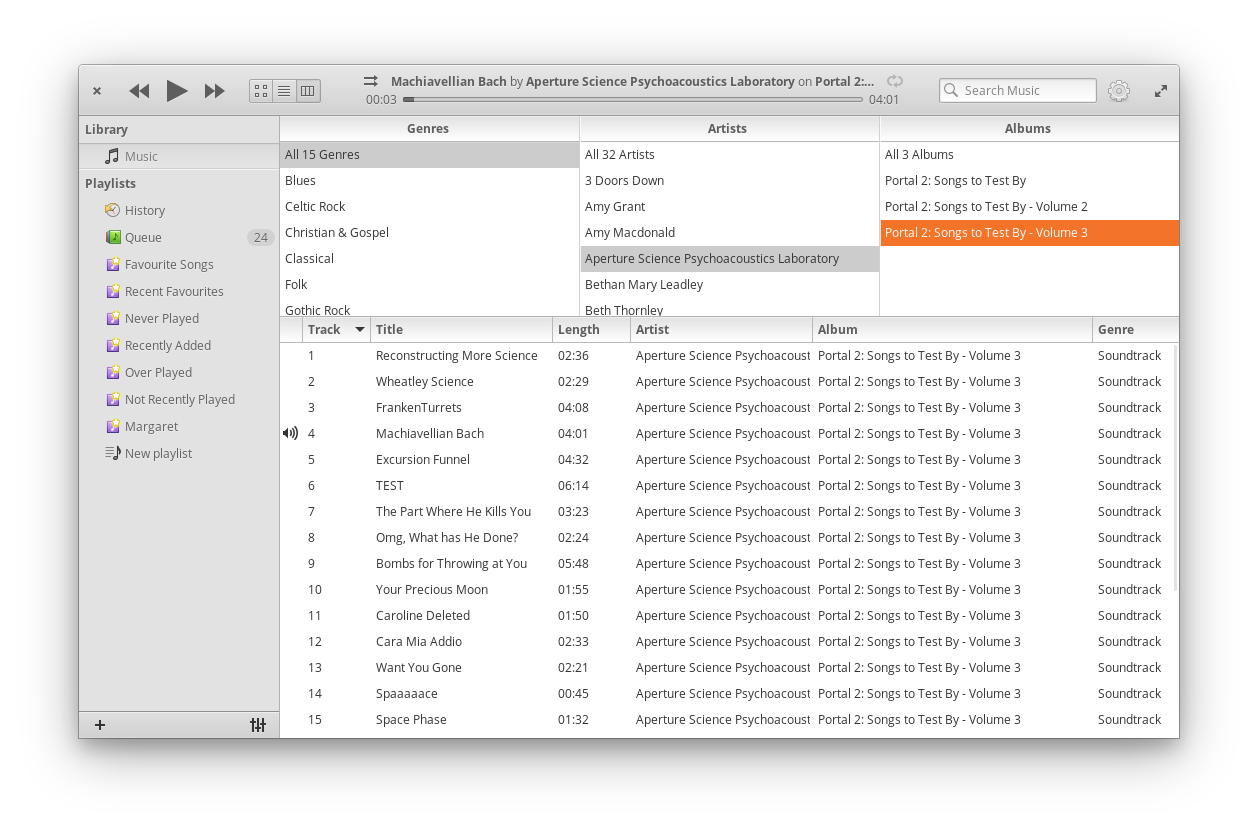
I commented on Music being basic looking, but after a bit of digging a bit further it seems to have a number of features. For example, it responds to my keyboard's media keys, so I can stop, pause and skip tracks. Editing track metadata is also possible, and this information gets displayed in notifications on track change. There's also a graphic equaliser so you can tinker with the amount of each frequency you hear.
I've not quite got the hang of Music yet, and there some things that frustrate me. The play queue is not always respected, so sometimes a different track will play altogether. Similarly, while you can close Music and it will continue playing, there doesn't seem to be a way to stop it from playing short of reopening the application and clicking pause, or using media keys.
Screenshot
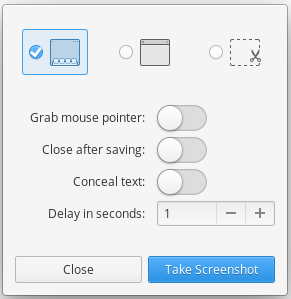
Those that are used to taking screenshots via the PrtSc (print screen) button on your keyboard need fear not - that still works, as does Alt + PrtSc to only screenshot the active window and Shift + PrtSc to select a specific area to grab. Equally you can hold down Ctrl with any of the aforementioned to place the screenshot on the clipboard ready for pasting somewhere else. If you want to add a delay before the screenshot is taken, or choose whether or not to capture the mouse pointer, you can do so via the Screenshot application.
Possibly the nicest feature I found was that screenshots are placed into their own directory under ~/Pictures/Screenshots which helps to keep them nice and tidy.
Terminal
elementary ships its own terminal emulator (command line) that shows the user's default shell (/bin/bash in my case). While not the most exciting of applications there are some nice features that I've not seen elsewhere.
Firstly, there's sudo paste protection which I found by accident after attempting to paste a command (probably sudo apt update) from my notes. Terminal immediately popped up a warning that was I was about to do could be dangerous, and asking me to confirm:
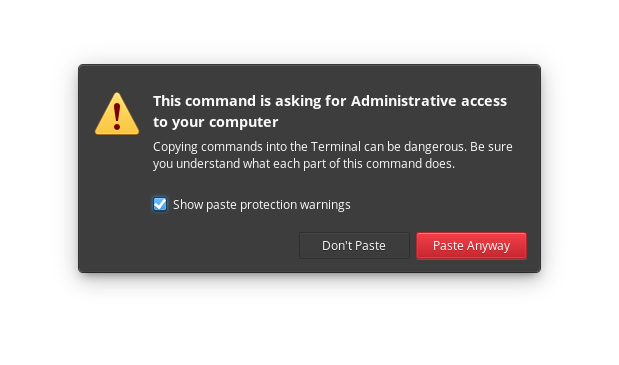
You'll only see that warning once per session, and can disable it altogether, but it's nice to see that included.
As I mentioned in part one, when a command completes in Terminal while it's hidden a system notification is triggered to make you aware. Notifications can be changed via the main notifications control panel.
When it comes to settings for Terminal it seems a bit sparse. I couldn't see a way to customise the colours beyond three built in profiles (high contrast, solarised contrast, dark) but it is easy to increase the font size. There's also a toggle for "natural copy/paste" to allow you to copy and paste with Ctrl + C / Ctrl + V, rather than requiring the addition of Shift, but note that this will cause problems with some command line operations (Ctrl + C is BREAK and will stop a running application). Handily Terminal does warn you about that when you toggle natural copy/paste on.
The AppCenter
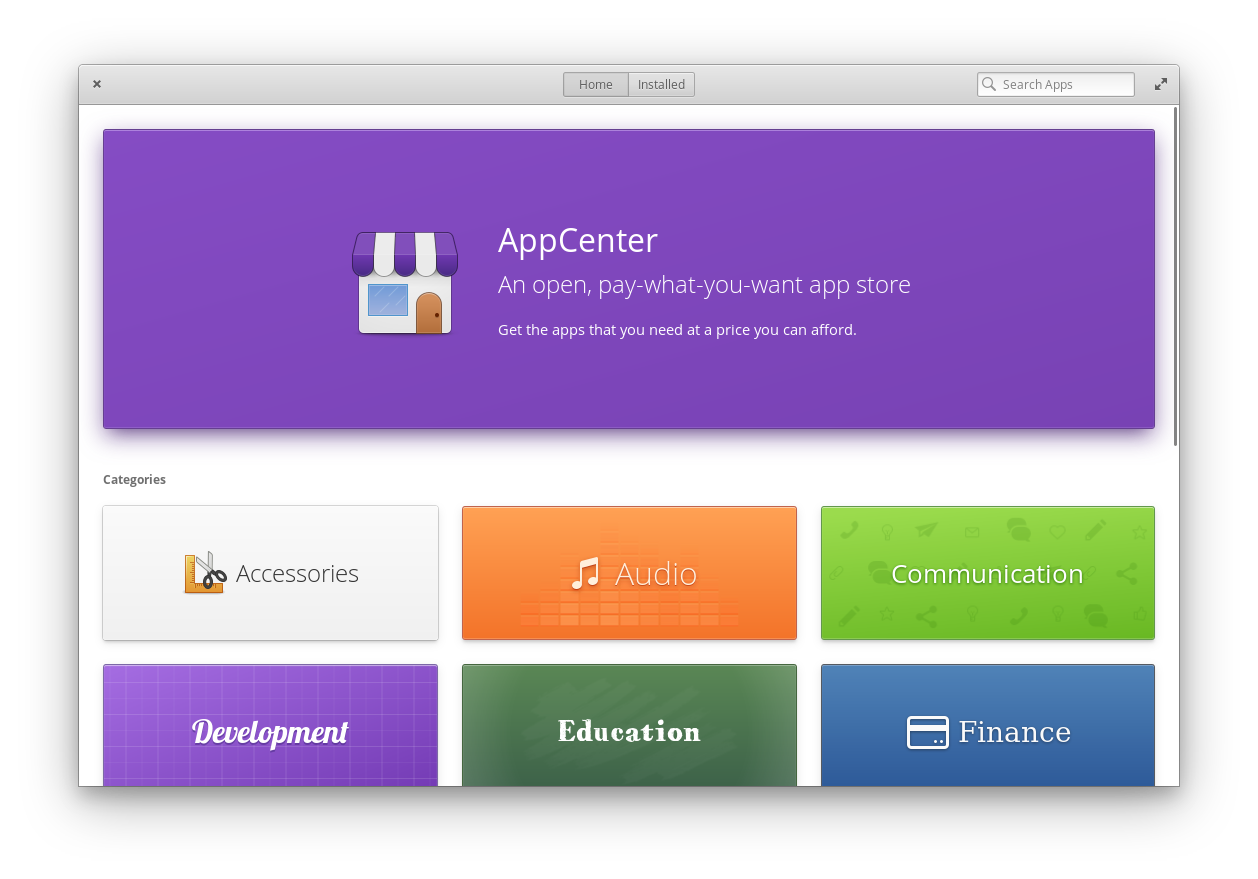
AppCenter is the recommended way to install new applications and is your gateway to the many elementary curated apps that exist. Curated apps are designed for elementary OS (you can browse curated apps here) and have been reviewed to "ensure a native, privacy-respecting, and secure experience". Given elementary are keen for developers to get paid where users can afford to do so, many apps have a dollar value in place of the install button, which otherwise would say "free". A drop down arrow allows you to change the payment amount, so you can still install an app for free if you don't have funds (or just want to try it) or can increase / decrease the amount you want to pay. It'd be nice if there was a tick box for "remind me after 5 uses", or similar, so you could remind yourself to pay after evaluating.
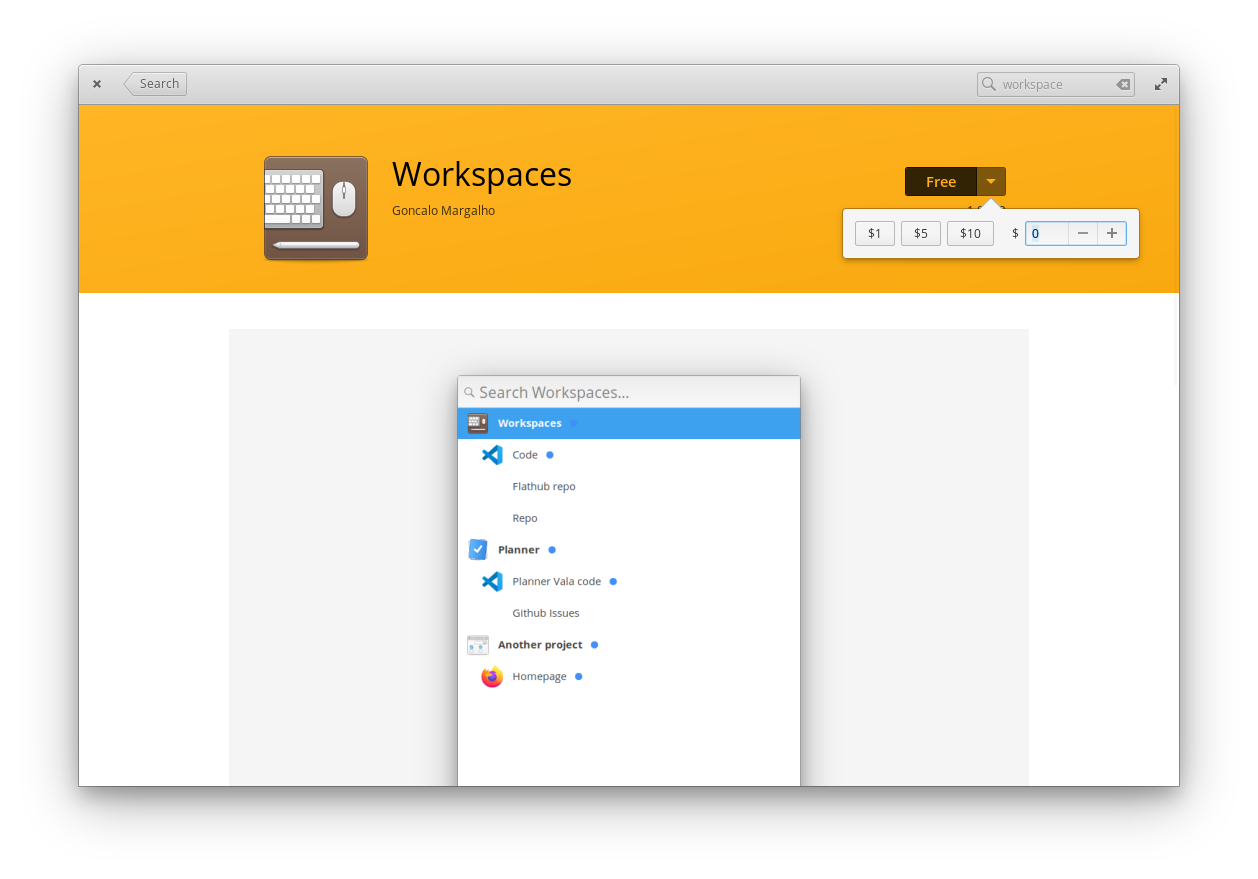
AppCenter is also where you can trigger the installation of system updates, via the Installed tab. Applications can also be uninstalled via the Installed tab.
Looking for a non-native application, such a Firefox? No problem, AppCenter has you covered. Simply search for what you're looking for and it'll appear under the heading of non-curated apps. Note in the screenshot below I searched for Firefox, my browser of choice for many years, and I was also offered Ephemeral, a privacy focused, permanently incognito browser. I've installed that too and I'll give it a go before purchasing - perhaps the topic of another blog post.

Installing using other tools
Being Ubuntu under the hood it's possible to install applications using apt or dpkg, although it should be noted these will not be curated applications so elementary has not reviewed them to determine their privacy impact.
Conclusion
elementary has a nice eco-system for apps [1] and I can completely respect the suggestion that people pay for the software. I'm very pleased the OS hasn't locked users to curated apps only, as that would make it non-viable for me, but I can see myself using some of the curated apps (and paying for them) rather than other options that I'm more familiar with.
Banner image: The AppCenter starting banner.
[1] In my head apps are what run on smartphones and smart devices and applications are what get installed on "traditional" computers. Perhaps I'm old fashioned!

